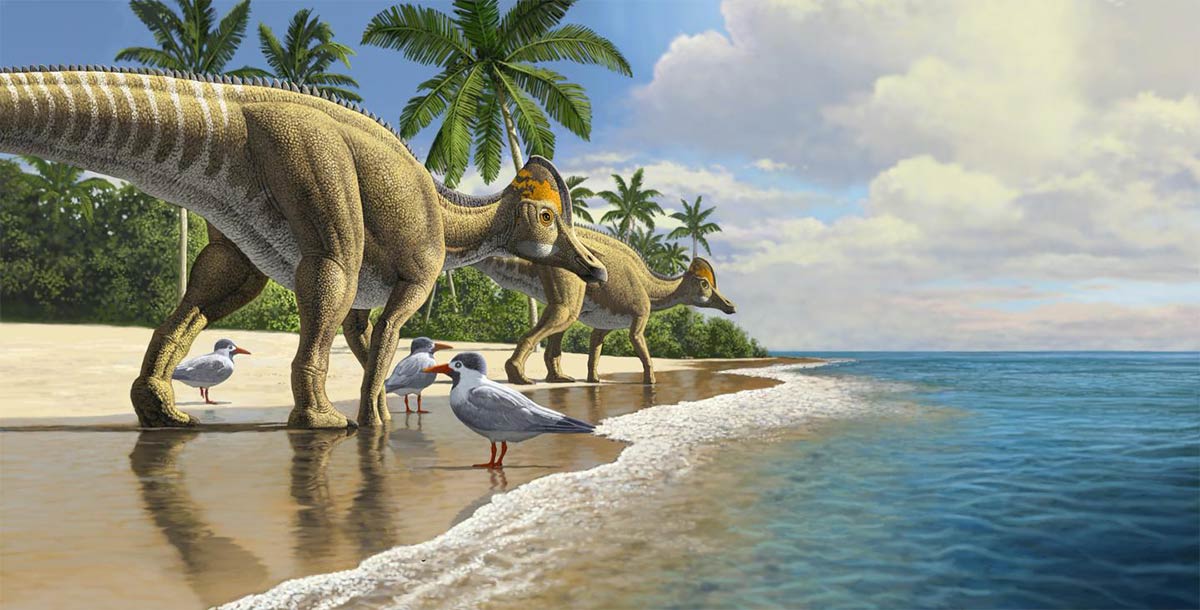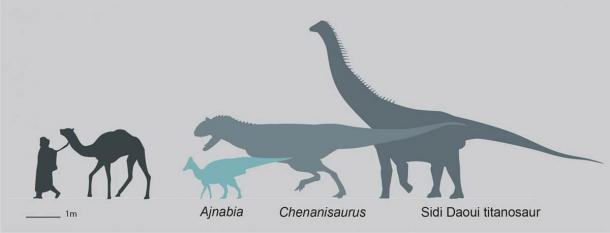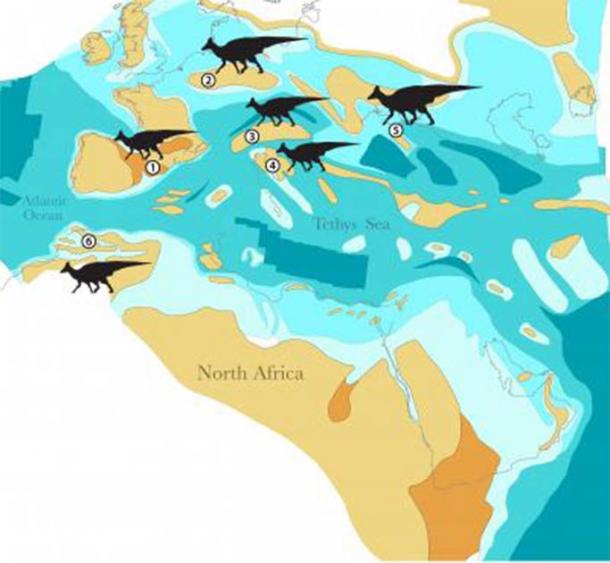Oceanic Migration 66 Million Years Ago
"[It was] about the last thing in the world you would expect [to find]. It was completely out of place, like finding a kangaroo in Scotland.""Africa was completely isolated by water -- so how did they get there?""Sherlock Holmes said 'Once you eliminate the impossible, whatever remains, no matter how improbable, must be the truth'. It was impossible to walk to Africa. These dinosaurs evolved long after continental drift split the continents, and we have no evidence of land bridges. The geology tells us Africa was isolated by oceans. If so, the only way to get there is by water.""Over millions of years, once-in-a-century events are likely to happen many times.""Ocean crossings are needed to explain how lemurs and hippos got to Madagascar, or how monkeys and rodents crossed from Africa to South America."Dr.Nicholas Longrich, Milner Centre for Evolution, University of Bath

A team of British researchers has reached the unlikely-seeming conclusion that duck-billed dinosaurs migrated out of North America, spread to South America, Asia and Europe, and finally to Africa. Species migration for hundreds of years has been both voluntary and involuntary, and usually by ship. Some animals like rats freeload on ships for far destinations by default. Some explorers deliberately brought species unknown in their native lands back with them, by ship. But this was an oceanic voyage undertaken by ancient dinosaurs on their own initiative, 66 million years ago.
The newly-discovered species has been named, Ajnabia odysseus. Remains of the animal were discovered in a mine near Casablanca in Morocco. The remains date to the end of the Cretaceous period, and that is a difficult-to-imagine 66 million years ago. Contrast that to human evolution when proto-humans began to emerge 7 million years ago. The predecessor of Homo sapiens, Homo habilis, surfaced 2.5 million years ago, known as the first to develop stone tools. And it wasn't until 70-50,000 years ago that humans began migrating out of Africa, the origin of humanity.
So a migration in the opposite direction to that which the first anatomically human creatures took, immensely predated humanity's move to begin populating the globe. Evolutionists believe that duck-billed dinosaurs used the open water of oceans to move hundreds of kilometres to reach Africa, after the discovery of the remains of the dinosaur, the first ever to be found on the continent. It is also considerably smaller than its otherwise-known counterparts.
 |
Silhouette showing the size of Ajnabia odysseus compared with humans and the contemporary Maastrichtian dinosaur fauna of Morocco. (Dr Nick Longrich / Science Direct ) |
The familiarly-known size of duckbills was up to 15 metres in length, huge compared to the newly-identified species which measures three metres. Africa, in the late Cretaceous period, was isolated by deep seaways, a fact that seems impossible for duckbills to migrate to, so far a distance without an available land route. Of course what may have motivated these land creatures to depart terra firma for destinations unknown by swimming or floating or hitching rides on drifting organic detritus will never be known.
They are, however, thought to have been strong swimmers, gifted with large tails (rudders?) and powerful legs. The enormous distances they would have had to travel through deep oceans in their journey presents an improbable, but likely adventure in migration. "Ocean barriers are not always an insurmountable obstacle" to migration, noted Dr.Nour-Eddine Jilil of Sorbonne University's Natural History Museum.
Its name is derived from Arabic for 'foreigner' (Ajnabi) and Odysseus (Ulysses) from the Greek fable of a wandering seafarer. The study, led by Dr.Longrich and his British team of scientists, was produced along with international colleagues from Spain, France, Morocco and the United States, and published in the science journal Cretaceous Research.
 |
Map showing the location of duckbill dinosaurs during the Late Cretaceous period. (Dr Nick Longrich / Science Direct ) |
Labels: Africa, Duckbill Dinosaurs, Evolution, Migration, North America

0 Comments:
Post a Comment
<< Home